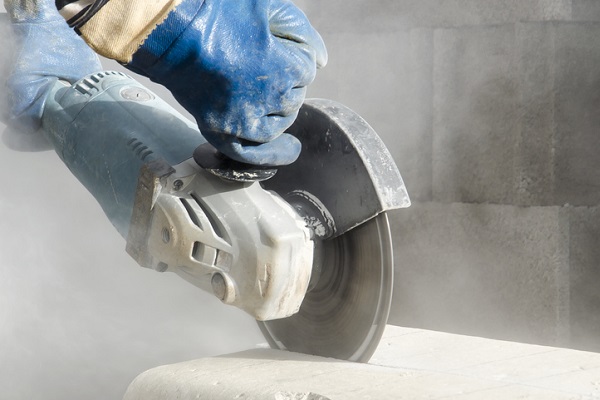New Victorian silica safety regulations come into effect

Worker cutting stone with grinder.
Victoria’s new Occupational Health and Safety Amendment (Crystalline Silica) Regulations 2021 (the Regulations) came into effect on 15 November 2021.
These new laws have been introduced to better protect workers from exposure to respirable (breathable) crystalline silica.
Crystalline silica is a natural mineral found in many materials such as engineered stone, granite, sandstone, concrete, bricks, tiles and mortar. Engineered stone is often used in the construction of benchtops, flooring and tiles. This type of stone (also called reconstituted stone) can contain up to 95% crystalline silica, which can be hazardous to health if inhaled.
The new regulations will strengthen the regulatory regime to better protect workers from exposure to respirable crystalline silica in four key areas:
- Introducing Australia’s first licensing regime for engineered stone, including increased manufacturer and supplier duties.
- Making permanent Victoria’s prohibition on uncontrolled dry-cutting of engineered stone and
- Adding additional regulatory oversight of high-risk crystalline silica work outside of engineered stone across all industries, including the construction and earth resources industries.
Introduction of financial penalties for businesses/officers who breach these regulations.
The regulations will be introduced in a phased approach, to ensure that all businesses and duty holders have enough time to prepare for the changes to their duties and obligations.
Under the new regulations, engineered stone will be considered to contain resins and at least 40% or more content of crystalline silica.
From Monday 15 November 2021, the 12-month transition period will commence for businesses who work with engineered stone to apply for and receive a licence to work with engineered stone, which requires them to: ensure employees are given information, instruction and training to control risks; provide health monitoring of employees and have an engineered control plan for working with engineered stone.
The commencement of specific controls to be used when working with engineered stone, including; the continued prohibition on dry-cutting; equipment such as on-tool water dust suppression or dust extraction devices being utilised, and; provision of applicable respiratory protection (including the use of, training etc) for the workers.
